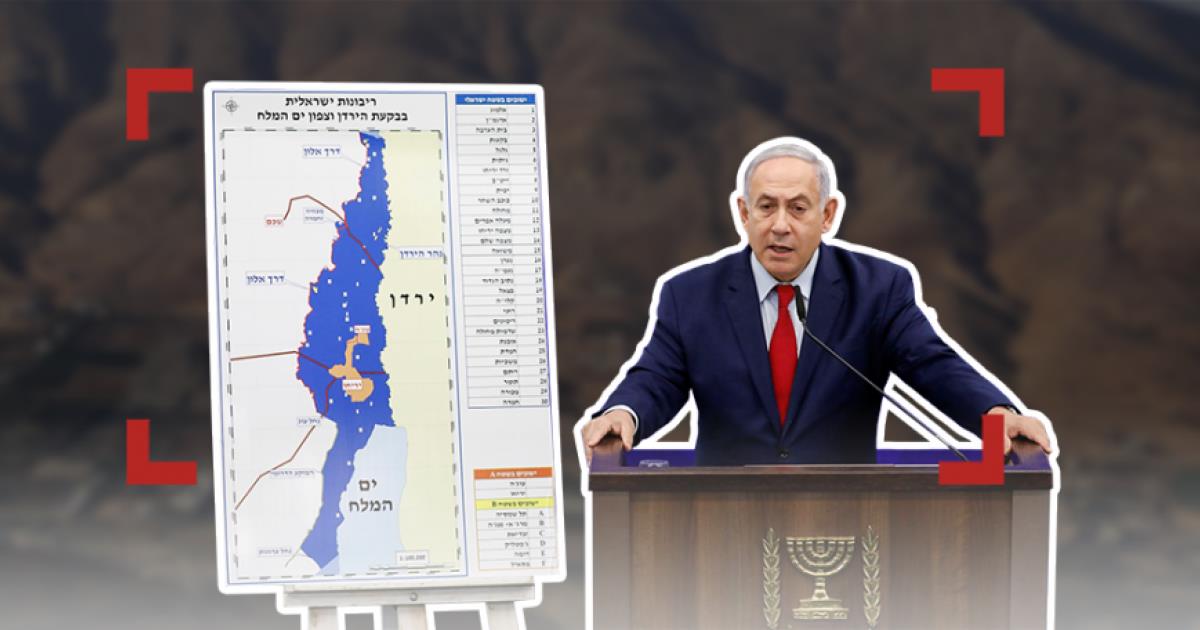The Jordan Valley Annexation: Implications For Jordan And The Palestinians Between Statehood, Security, And Resources
I. The 2025 Context – Why Annexation Now?
- Response to European recognition of Palestine: Annexation is presented as a“political countermeasure” to France, the UK, and other states moving to recognize Palestinian statehood.
Coalition dynamics inside Israel: In July 2025, the Knesset passed a symbolic (non-binding) resolution calling for“sovereignty over Judea, Samaria, and the Jordan Valley,” providing domestic political cover for annexation rhetoric. Accumulated international legal pressure: In July 2024, the International Court of Justice issued an advisory opinion declaring Israel's occupation unlawful and ruling settlement and annexation to be violations of international law, with obligations on states not to recognize or assist.
Netanyahu's precedents and the 2020“suspension”: Netanyahu previously floated Jordan Valley annexation in 2019–2020, before suspending it under the Abraham Accords with the UAE and Bahrain. The idea now resurfaces in a“partial” or“gradual” form.
The Jordan Valley and the northern Dead Sea constitute roughly 30% of the West Bank, home to about 65,000 Palestinians and around 11,000 settlers, according to rights-based data. The area includes 30 settlements, 18 outposts, and extensive Bedouin communities. In the Israeli perception, this geographic bloc serves as a“security belt” separating the West Bank from Jordan and providing strategic depth along the Jordan River.
III. The Legal Framework – Why Is Annexation a Grave Violation?- The prohibition on acquiring territory by force is a foundational rule of the UN Charter. The ICJ's 2024 opinion reaffirmed the illegality of continued occupation, settlements, and annexation.
Any Israeli step to impose“sovereignty” over the Valley would be legally void internationally and expose officials and institutions to potential prosecution before the International Criminal Court under the war crimes file on settlements. UN and EU positions have consistently stressed that unilateral annexation is illegal, with some European states signaling possible sanctions if carried out.
- Security and ideological rationales: Viewing the Valley as a natural frontier and Israel's“security border.”
Domestic political considerations: Appeasing right-wing constituencies demanding resolution of the“Area C” question, while offering a“compromise” palatable to the U.S. Diplomatic bargaining: Using annexation as leverage against European recognition of Palestine.
Leaks point to a limited-sovereignty scenario over the Valley, including settlement blocs and security corridors rather than the entire West Bank. The likely procedural path: a government decision + Knesset legislation + administrative and judicial extension of Israeli law to the area, while leaving some Palestinian pockets under forms of“expanded civil administration.” This model mirrors what happened in East Jerusalem and the Golan Heights.
VI. Implications for Palestinians- Final blow to the two-state solution: Annexation detaches the agricultural and border depth of a future Palestinian state, cutting it off from Jordan.
Land and water resources: The Valley is a critical agricultural and water reservoir; Israeli control entrenches inequality in access. Bedouin and vulnerable communities: Annexation accelerates forced displacement and entrenches facts on the ground.
The Palestinian Authority and Oslo: Annexation would redefine jurisdictional boundaries and could push the PA to suspend coordination or reconsider its commitments.
- Wadi Araba Treaty and border-water management: Annexation does not alter legal borders but changes the nature of the counterpart across the river, complicating border and water management.
Official stance: Jordan has repeatedly warned of“grave consequences” if Israel proceeds. Internal security and economy: Annexation increases risks of border tensions and pressures Jordan's already-strained water sector.
Bilateral relations: Amman may downgrade ties or restrict economic cooperation and joint projects.
- Europe: Potential adoption of punitive measures, especially amid momentum for Palestinian recognition.
United States: The decisive factor; some reports suggest an effort to frame partial annexation as acceptable across party lines. UN system: The ICJ's 2024 opinion strengthens the legal and moral ceiling, facilitating non-recognition policies and enabling states to justify pressure measures.
Tactical retreat in exchange for understandings with major powers, as in 2020. X. Core Geopolitical Effects on the West Bank
- Fragmentation of Palestinian space: Turning the Valley into an“Israeli sovereign edge” effectively cages Palestinian enclaves.
Entrenchment of settlements: Annexation strengthens settlements and agricultural outposts while institutionalizing a segregated road network.
- Palestinian: Enforce non-recognition and non-assistance principles, accelerate the ICC track, and unify diplomacy with the European recognition wave.
Jordanian: Leverage Wadi Araba Treaty provisions, develop border-security scenarios, and coordinate with Europe to pressure Israel. International: Move from condemnation to enforcement, such as restrictions on settlement products or revisiting security cooperation.
Partial annexation of the Jordan Valley has emerged as a serious option for Netanyahu, framed as less costly domestically and more marketable abroad. Yet it remains a qualitative escalation undermining the two-state solution.
For Jordan, annexation does not alter the 1994 legal border but intensifies pressure on water, security, and bilateral relations.
At the international level, the ICJ's 2024 opinion established a new ceiling for handling annexation, making any Israeli move in 2025 politically and legally costly.

Legal Disclaimer:
MENAFN provides the
information “as is” without warranty of any kind. We do not accept
any responsibility or liability for the accuracy, content, images,
videos, licenses, completeness, legality, or reliability of the information
contained in this article. If you have any complaints or copyright
issues related to this article, kindly contact the provider above.
Most popular stories
Market Research

- New Cryptocurrency Mutuum Finance (MUTM) Raises $15.8M As Phase 6 Reaches 40%
- Bydfi Joins Korea Blockchain Week 2025 (KBW2025): Deepening Web3 Engagement
- Yield Basis Nears Mainnet Launch As Curve DAO Votes On Crvusd Proposal
- 0G Labs Launches Aristotle Mainnet With Largest Day-One Ecosystem For Decentralized AI
- Ethereum-Based Defi Crypto Mutuum Finance (MUTM) Raises Over $16 Million With More Than 720M Tokens Sold
- Fintech's Gender Gap In Focus: Drofa Comms' Women Leading The Way Joins Evolvh3r's She Connects At TOKEN2049






















Comments
No comment